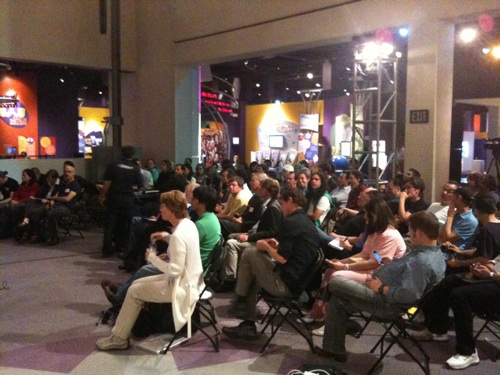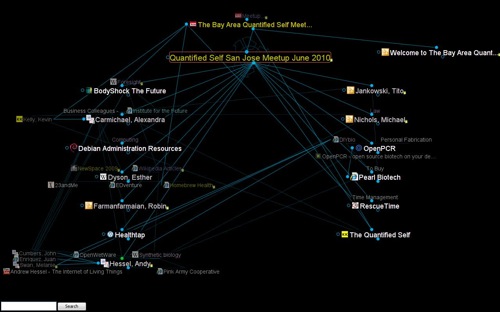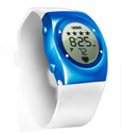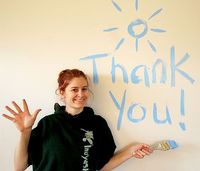Bay Area QS Show&Tell #14 – Recap
Alexandra Carmichael
June 24, 2010
 This was the scene two days ago, when the lower floor of the Tech Museum of Innovation in San Jose was opened after hours to an energetic group of Quantified Self enthusiasts and interested spectators.
This was the scene two days ago, when the lower floor of the Tech Museum of Innovation in San Jose was opened after hours to an energetic group of Quantified Self enthusiasts and interested spectators.
The first 90 minutes was filled with mingling, enjoying healthy munchies, and gathering around the various devices that people brought to show as part of the theme this time: “Gadgets for Gathering Data.”
Then the talks began – some prepared, some spontaneous, all of them interesting. Here’s a quick recap:
1. Bill Jarrold showed his
hot-off-the-command-line charts for how many UNIX commands he issues by
hour of the day. He found that 3 pm was his peak performance in terms
of number of commands. A second peak at at 10/11 pm
showed him that he was a night-owl. He was surprised to see that by
this measure, his productivity at midnight was as good as his
productivity at 10 am.
using TheBrain. He spends 1-2 hours a day inputting information
into his virtual brain, and has recorded about 65,000 thoughts so far. He felt that the main benefit
this gave him was enhanced recall, which has given him an advantage in
business situations. He said he has become very attached to the
system he uses and doesn’t like to be away from it for more than a few
hours at a time.

3.
Bharat Vasan demonstrated his PulseTracer heart rate monitor, which
betrayed his
 nervousness at public speaking by flashing a heart rate of 120 bpm on his wrist. He
nervousness at public speaking by flashing a heart rate of 120 bpm on his wrist. Hedescribed how this single measure served as an indicator of the
stressfulness of situations he found himself in, and helped him remember
to take positive actions he might otherwise have forgotten in the heat
of the moment.
DirectLife since last October has increased his activity level,
especially when he sees large gaps in activity from sitting at the
computer, and when he gets little “light show” rewards from the
DirectLife on days when he’s met his target. He was surprised to find that
even these very simple rewards were consistently motivating.
Giving Thanks and Looking Forward
A huge thanks to our sponsors who generously helped make this event possible: Ron Gutman  of HealthTap, which is setting up a “Quantified Self Room” at their soon-to-be-opened offices in Palo Alto; the Tech Museum, who is collecting ideas for health exhibits as part of their “participatory museum” philosophy (send ideas for to Alana Conner); and Zeo, the Personal Sleep Coach, who provided healthy food and videorecording.
of HealthTap, which is setting up a “Quantified Self Room” at their soon-to-be-opened offices in Palo Alto; the Tech Museum, who is collecting ideas for health exhibits as part of their “participatory museum” philosophy (send ideas for to Alana Conner); and Zeo, the Personal Sleep Coach, who provided healthy food and videorecording.
And last, but very far from least, a standing ovation to Maren Connary for help with setting up, Loren Risker for taking the videos, Andrew Hessel for the picture at the top of this post, and Robin Barooah – for augmenting my memory of the talks and for his meditation tracking app that I have come to love.


